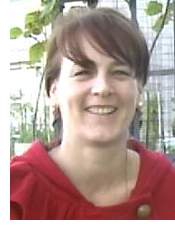Wednesday, January 13th, 2010

Since the show went off the air in November of 1990, Pee-wee’s Playhouse has been frozen in time, largely enjoyed by an audience of older fans and their children who purchased DVD and VHS collections made available over the years. Yesterday, after almost two decades, Pee-wee’s Playhouse returned to the stage of Club Nokia in Los Angeles. The night started with a standing ovation for Paul Reubens, the visionary behind the lovable Pee-wee character, before the show officially started to a packed hall of almost 1, 200 fans.
Once a couple of comedic formalities were taken care of, the stage curtains parted, and everyone in the room was instantly teleported back in time. The show’s set was unveiled in all of its technicolor glory, and after a friendly hello center stage by the lovable Chairy, the large talking light blue chair, you felt you were back in your parents living room eating a bowl of cereal while watching the original airing of Playhouse back in the 1980s.
Original cast members from the show made their appearance alongside Pee-wee. Miss Yvonne, the show’s favorite debutante, and Jambie, the helpful Genie who allows you just one wish a day, felt like you were having a get-together with old friends. New to the cast were others who played the roles of Cowboy Curtis and the King of Cartoons. New characters to the show were introduced in this episode which included Mailman Mike (sorry, no Reba the Mail Lady), Firefighter, Sergio, and a large, mostly silent Bear character.
All of your favorite puppetland characters were in attendance as well. Conky, the stuttering/dancing robot kicked things off with the secret word of the day (and everyone in the audience screamed real loud.) Pterri, the talking pterodactyl was also along side Globey, Clocky, Randy, the singing flower bed, Magic Screen, and a number of other inanimate objects familiar to the show.
The roughly 90 minute performance meticulously captured all of the qualities of the show, punctuated with the same sound effects used throughout the original program. Their was also a nostalgic cartoon, two infomercials, and even a 1950s public service announcement. One main storyline included the unfolding love story between Miss Yvone and Cowboy Curtis which felt as though it picked up right where the final on-air episodes of Pee-wee’s Playhouse left off. Alongside this story included Pee-wee’s wish to some day fly just like Pterri.
Paul Rubens’ performance was wonderful, and his costume and appearance looked as if it had been carefully tucked away in the family toy box, only to be brought out again in a compete pristine appearance, never having aged a day. Sound levels were not quite balanced and timing of some sound effects were off, but this could easily be overlooked for an opening night. Fans of the show may also wonder where the familiar music for the show, created by Devo front man Mark Mothersbaugh, might be hiding. The lighting and stage sets were all fantastic and worth the price of the ticket alone. While I was originally concerned about the venue switch from the Music Box to Club Nokia, the new performance hall was stunning and an excellent fit.
The humor, visuals, and music that made the original Playhouse television show live on now has the opportunity to be enjoyed by a whole new audience, and hopefully influence a whole new crowd of children’s television developers. What was great about the show back in the day was that it was a creative oasis in the middle of a large children’s television void. This children’s television emptiness still lives today, and networks should revisit the creative genius of this show that is as fresh today as it was when it launched. And stay tuned for more from Pee-wee. It’s rumored a new Pee-wee movie, and possibly two, are in the works.
There are 29 live shows left to be enjoyed between now and February 7, 2009. If I could have one wish from Jambie, I might ask for a few matinees for 18 and under shows. Except for a handful of jokes about an abstinence ring, reference to states that are accepting of gay marriage, and a small hint of toilet humor, the comedy on the whole was pretty harmless and could easily be adapted for younger audiences.


